
Photo: Keeneland Library Collection
Latonia Race Track
Latonia Race Track
In 1875, with thoroughbred horse racing in North America gaining in popularity, Churchill Downs introduced what would become one of the world’s most popular horse races, the Kentucky Derby. Seven years later, in 1882, the Latonia Agriculture and Stock Association, determined to increase its share in what was rapidly becoming a lucrative market, built a modern state-of-the-art racecourse in Covington, Kentucky, just a few miles from Cincinnati, Ohio. They named this new racetrack Latonia.
Latonia officially opened for business on June 9th, 1883. Four races were carded, including two stakes, the five-furlong Clipsetta for two-year-old fillies and the mile and one-half Hindoo Stakes for three-year-olds. Opening day at the new track was a gala event and was well attended by citizens from Covington and the nearby town of Newport. Though the racetrack’s dirt surface was in excellent condition, construction of the grandstand had not yet been completed. In due time it was, and visitors were impressed with what was a magnificent setting with its shiny green and white grandstand and beautifully landscaped infield, which was adorned with colorful flowers and highlighted by a small lake with a bridge crossing at its center.
Latonia was extremely successful during its early days, this despite a growing number of controversies, some of which were particularly suspicious. In 1904, the Kenton County Circuit Court in Covington granted a motion to appoint a receiver for the track when it was discovered that most of the stockholders never received any dividends, even though the association running the place had earned large sums of money. However, the motion was thrown out four days after it was granted.
In 1910, a group headed by George B. Cox of Cincinnati, congressman Joseph Rhinock, and businessman Harvey Meyers, sold 90% of the entire operation to Captain C. A. Tilles, a well-known horseman from St. Louis. When the purchase was completed, the track, by then badly rundown despite being profitable, underwent extensive improvements which also included a pari-mutual betting system commonly used by other racetracks in Kentucky.
In those days, horse racing, harness racing, and baseball were the most popular sports in the country, and when Latonia opened for business, racing fans immediately embraced it. It was not uncommon for huge crowds to come out to see some of the finest horses in the nation compete, one of the largest the 60,000 that watched the third and final edition of the International Special series of races in 1924. The date was October 11th, and the race pitted the French champion Epinard against a select group of American challengers.
The first leg of the series, a six-furlong sprint, was held at New York’s Belmont Park on September 1st. An enormous crowd estimated at 75,000 was on hand to watch Epinard finish second by three-quarters of a length to favored Wise Counsellor, with Zev, America’s 1923 Horse of the Year, finishing fifth in a time of 1:11 4/5.
The second leg of the Special was held at Aqueduct on September 27th. The distance was increased to one mile and a crowd of 40,000 watched the four-year-old chestnut, who had already won eight stakes in France, again finish second, this time by a nose to the favorite Ladkin after repeatedly being bothered by other horses during the race. The time was a respectful 1:36 2/5.
Latonia was honored to host the third and final leg of the series, this one at the classic distance of a mile and one-quarter. A powerful field lined up behind the barrier, including American stalwarts Sarazen and Princess Doreen – both to eventually be inducted into the National Museum of Racing and Hall of Fame, Man o’ War’s full brother My Play, which won the two-mile Jockey Club Gold Cup, Belmont Stakes winner Mad Play, Little Chief, which won the 1922 Travers Stakes, and the excellent three-year-old colt Chilhowee, who earlier that spring won the Latonia Derby over that year’s Kentucky Derby winner Black Gold. The 60,000 cheering fans got their money’s worth as the odds-on favorite Epinard once again finished a disappointing second, this time to Sarazen, who drew away to gain the victory by a length and one-half in a track record time of 2:00 2/5.
For Latonia and its growing number of fans, the International Special was a one-race affair. The track’s most important race, however, was the Latonia Derby, a strenuous mile and one-half test for three-year-olds originally named the Hindoo Stakes in honor of the great Hall of Fame inductee. Between the years 1883 and 1937, a great number of horses that won the Kentucky Derby also ran in the Latonia Derby, which was run six weeks after the Kentucky Derby. In the early years, it was won by seven Kentucky Derby winners: Leonatus (1883), Kingman (1891), Halma (1895), Ben Brush (1896), Lieut. Gibson (1900), Elwood (1904), and Sir Huon (1906). The fact that only this group of seven won the Latonia Derby suggested to many that the Latonia’s signature race was at least as good, and possibly even better than the Kentucky Derby, a fact that angered Churchill Downs management and was further exacerbated by the fact that in many of those years, Latonia led the nation in purse money distribution.
During its 57 years of operation, Latonia, like many racetracks, was responsible for improvements in the sport. In 1911 it introduced the $2.00 ticket, which is still the standard betting denomination in the sport today. In 1917 there was an accident when five horses went down as the barrier rose upward to start a race. It took 22 years, but Mr. Clay Puett, a Texan, used this unfortunate incident as his inspiration to work on what would become racing’s first electronic starting gate which was introduced at Latonia in 1939.
Latonia also had its share of dignitaries, special stars, and special events:
- In 1909, a small air show featuring some of the most incredible barn-storming flyers in America was held there, the successful event hopefully enough to secure the rights for an international air show in 1910. (It failed as the event was held in Los Angeles).
- In 1931, famed jockey Eddie Arcaro, who was born just a few miles away in Cincinnati, began what would be one of the most incredible riding careers ever in the sport at Latonia.
- In 1938 President Franklin D. Roosevelt held a political rally at Latonia.
Sadly, like many struggling businesses, Latonia couldn’t overcome the adverse effects of the Great Depression. Money dried up, and without it, racing fans stayed away until the inevitable happened – Latonia could no longer operate profitably. This eventually forced management to make the painful decision to sell this once prosperous racetrack to Standard Oil of Ohio. In the ensuing years, many of the sport’s greatest race tracks would be forced to close, including Bay Meadows in 2008, Hollywood Park in 2013, Calder Park 2020, and Arlington Park in 2021, their properties doomed to be converted into shopping malls, housing developments, factories, and a new football stadium in Chicago. Latonia preceded them and the doomed track’s final race card was held on July 29th, 1939. In 1941, the grandstand was demolished and the picturesque lake was filled in to make way for a refinery. In later years, the refinery was also sold off and demolished and was replaced by the Latonia Shopping Center.
The original Latonia Race Course might be gone, but it was never forgotten. In 1959 a new racetrack, aptly named Latonia, was built in Florence, Kentucky, about ten miles from the original Latonia. It too, suffered through financial difficulties, which actually began during its construction. But the new management worked hard to overcome these difficulties and the planned construction was completed. Despite being sold several times in the coming years, the race track, which would undergo a name change, is still in operation today.
Turfway Park
The first sale was in 1986 when Latonia was purchased by Jerry Carroll and partners and the name was changed to Turfway Park, which is its current name. In 1999, Carroll and his group sold the track in equal parts to lottery equipment manufacturer Gtech, gaming conglomerate Harrah’s Entertainment (later renamed Caesars Entertainment), and the Keeneland Association. In 2005, Gtech sold its interests to the other partners, leaving Keeneland and Harrah’s with 50-50 interests.
In 2012, Dan Gilbert‘s Rock Gaming (later renamed as Jack Entertainment) purchased a forty percent stake of Turfway Park from Keeneland and, in 2015, bought out Caesars’s 50 percent stake. In April 2019, Jack Entertainment agreed to sell its stake in Turfway Park (90%) to Hard Rock International. The transaction was part of a $780-million deal that would also include Jack Cincinnati Casino (which accounted for $745 million of the sale price and was renamed Hard Rock Casino Cincinnati).
Ironically, In 2019 Churchill Downs, Inc. replaced Hard Rock as the buyer, agreeing to pay $36 million to Jack and $10 million to Hard Rock. Churchill completed its purchase of the property in October 2019
As for the Latonia Derby – the track’s original signature race, which at one time challenged the Kentucky Derby in importance and popularity? It was re-introduced in 1972 as the Spiral Stakes. Since that time, it has been run under many different names: the Spiral Stakes (1972 – 1983), Jim Beam Stakes (1984 – 1998), Galleryfurniture.com Stakes (1999), the Spiral Stakes (2000 – 2002), Lanes End Stakes (2003 – 2010), the Spiral Stakes (2011 – 2017), and the Jeff Ruby Steaks beginning in 2018.
The Jeff Ruby Steaks is still considered an important Kentucky Derby prep despite its grade three rating and the fact that since 2005 its surface has been synthetic and not conventional dirt. In its history, Turfway Park’s signature race has managed to produce two Kentucky Derby winners: Lil E. Tee in 1992 and Animal Kingdom in 2010, while other winners Summer Squall (1990), Prairie Bayou (1993), and Hard Spun (2007) each finished second.
In 2009, the Horseplayers Association of North America introduced a rating system for all racetracks in North America. In 2016, Turfway was ranked #11.
Since purchasing Turfway Park, Churchill Downs Inc. demolished the grandstand in 2020, built a new casino, and a new facility that includes grandstand seating for 2,500, a ballroom, food/beverage venues, and several bars. The project will reportedly include the largest simulcast area in the state with 1,500 machines, as well as a Historic Racing Parlor, which is an electronic gambling system that will allow players to bet on replays of races that had already been run years previously.
As for live racing? Turfway will operate from late fall to early spring, and purses have been dramatically increased to attract better class horses, top trainers, and top jockeys. Churchill Downs also plans to build a new inner dirt track to fit inside Turfway’s one-mile synthetic Tapeta track.
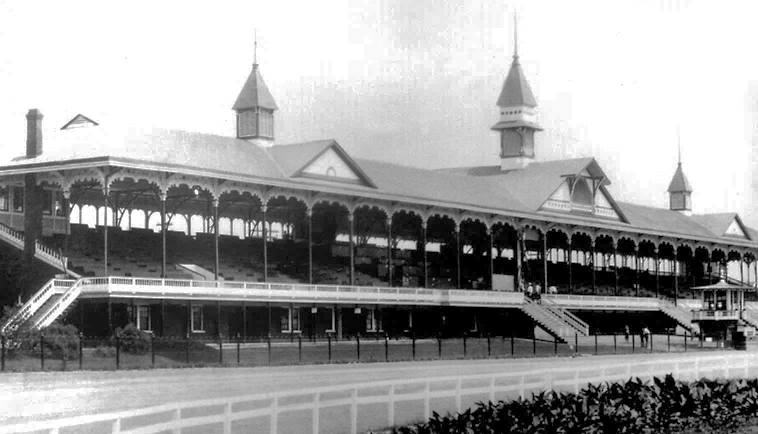
Latonia Grandstand and Club House. (Photo: Keeneland Library Collection)

Latonia’s infield with the bridge crossing the pond. (Photo: Keeneland Library Collection)
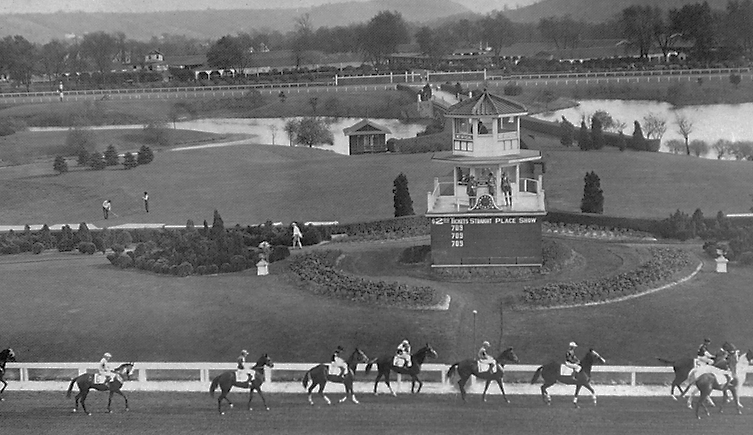
The post-parade before a race at Latonia Race Track. (Photo: Keeneland Library Collection)

Horses warming up before they race at Latonia Race Track. (Photo: Keeneland Library Collection)
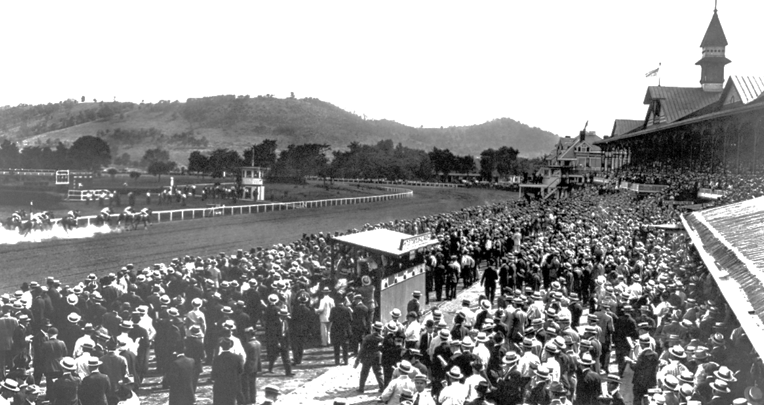
The field breaks from the barrier at Latonia Race Track. (Photo: Keeneland Library Collection)

The field moves around the far turn at Latonia Race Track. (Photo: Keeneland Library Collection)
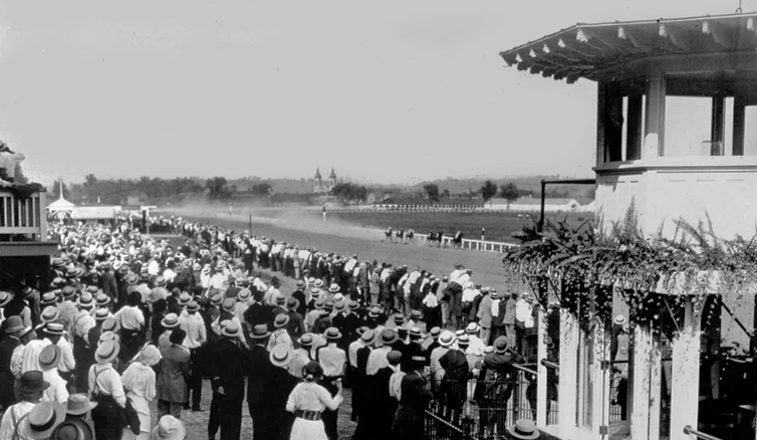
The drive through the stretch at Latonia Race Track. (Photo: Keeneland Library Collection)

The winner in front of the grandstand at Latonia Race Track. (Photo: Keeneland Library Collection)
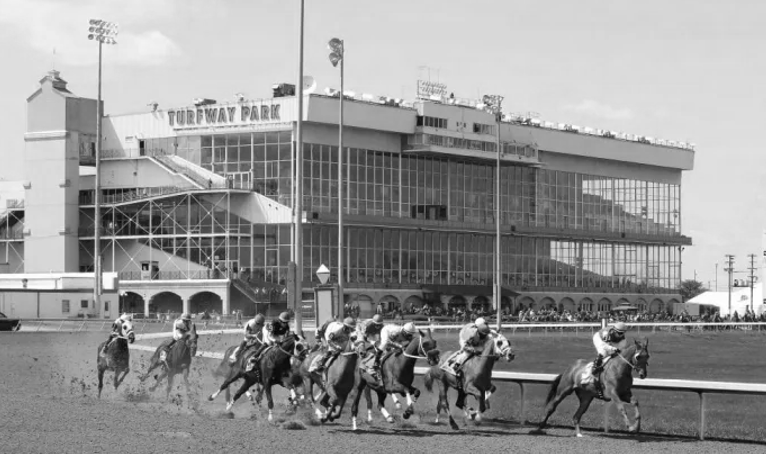
Racing at Turfway Park in 2016. (Photo: Coady Photography)
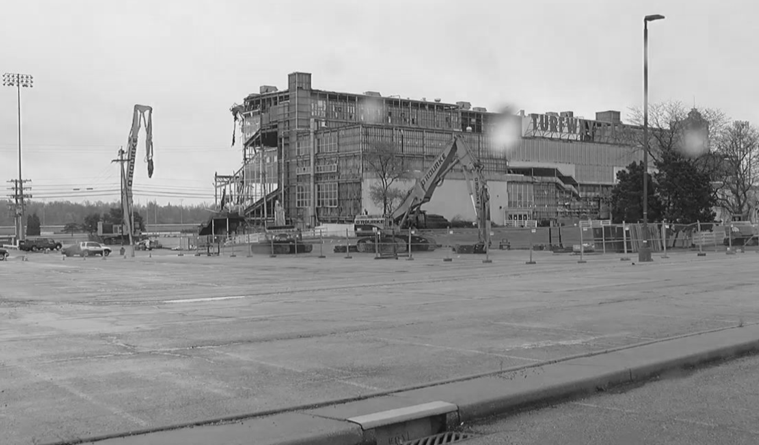
Demolation of the Turfway Park grandstand in 2020. (Photo: WKRC)
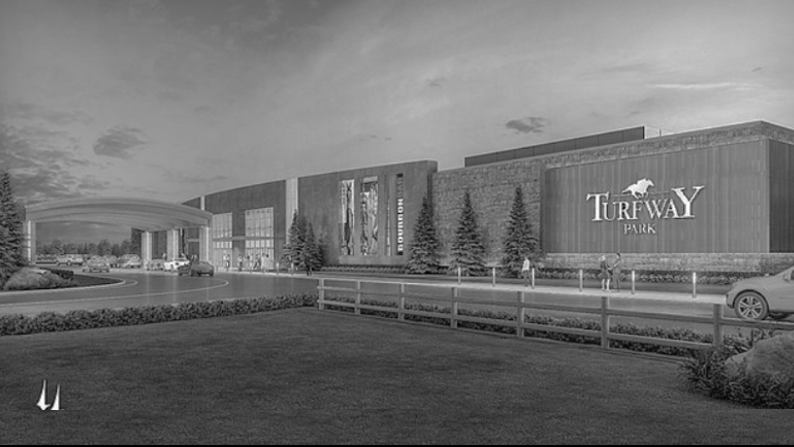
The new Turfway Park Racing & Gaming. (Photo: Churchill Downs)
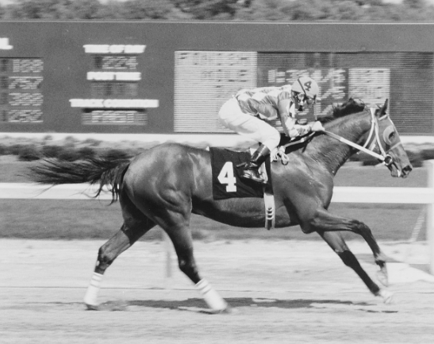
Alysheba
(Photo: Lang Photos)
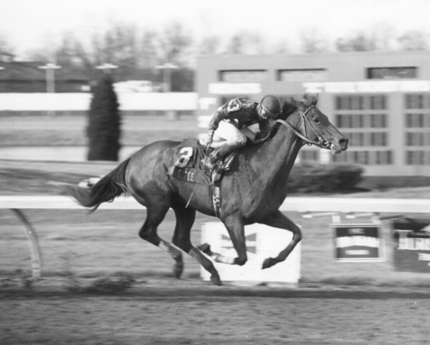
Lil E. Tee
(Photo: Racing Biz)

Animal Kingdom
(Photo: Pinterest)
Above, are three Kentucky Derby winners that raced at Turfway Park. (Left) Alysheba, raced twice as a two-year old, breaking his maiden in a MSW in September 1982, then finished second in the In Memoriam Stakes to Rainbow East. The following year he won the Blue Grass, Kentucky Derby, the Preakness and finished fourth in the Belmont. (Center) Lil E. Tee won the 1992 Spiral Stakes and the Kentucky Derby at 17-1. (Right) Animal Kingdom won the 2011 Spiral Stakes and the Kentucky Derby at 20-1.
